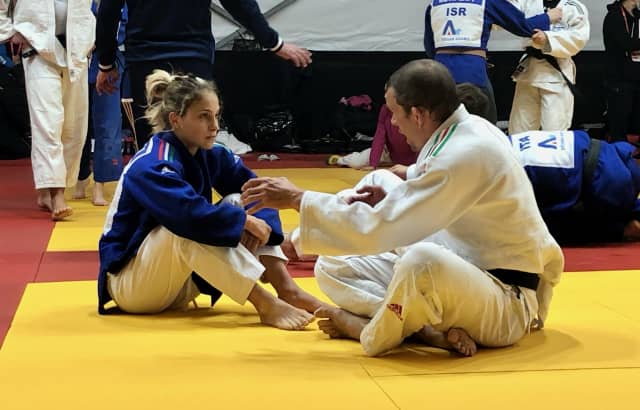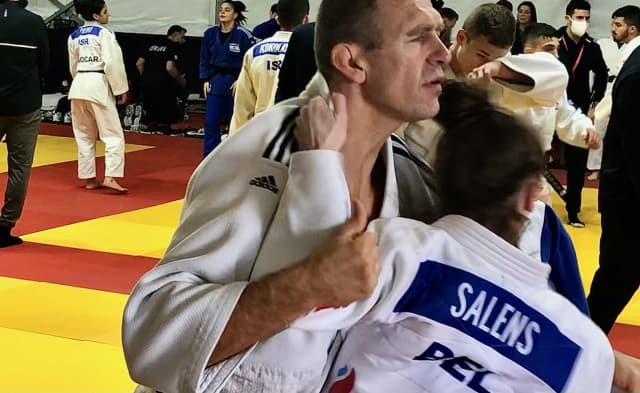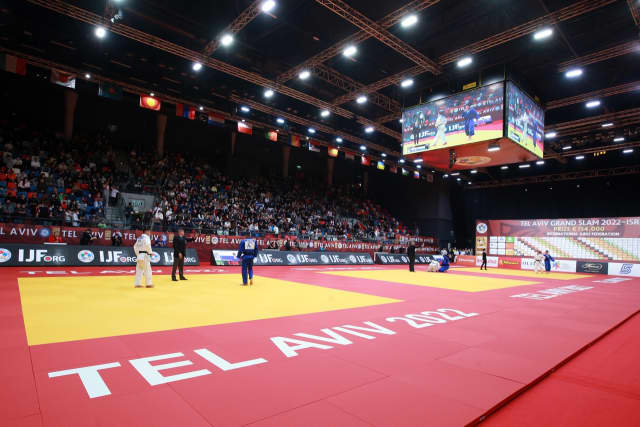The warm-up, for every athlete, is something individual, essential, preparatory in so many ways that we can't take stock of it all.An inventory of what is affected by the warm-up would be a very long list indeed. It's about energy, technical readiness, strategy, team communication. It's about breathing, acclimatisation, resilience, accurate peaking.
Double Olympic medallist Odette Giuffrida (ITA) sits with her coach, quietly engaged in pinpoint conversation. We don't know the subject but we know it's important. They are both in judogi and are both recovering from the fast pace of the mat work just completed. Speed seemed to be the focus, with kumi-kata drills and a blur of fast feet.
We could be forgiven for thinking of the highest echelons of the elite as an untouchable layer of judo, a tier of athletes no longer requiring the reinforcement of coaches, but this is never true. In judo, improvement, feedback and togetherness are a constant. Olympic medallists maintain their relationships with the coaches, understanding the value they have.
Our first sight of Salens of Belgium is as she lands, again and again. She jumps up and throws, again and again. She throws her coach who is right there, exactly where she needs him to be. It's a to and fro, equal distribution, both tori, both uke. This is a shared warm-up and when they walk through the tunnel together, each will understand that the other is truly with them. It's symbiosis.
This way of working may not be for everyone but it is striking when we see it. We can appreciate the effort and the will to prepare every detail in unity and with shared understanding. It is another side of jita kyoei and we must nod to its merit.
Judo remains the most team-orientated individul sport in the world.



